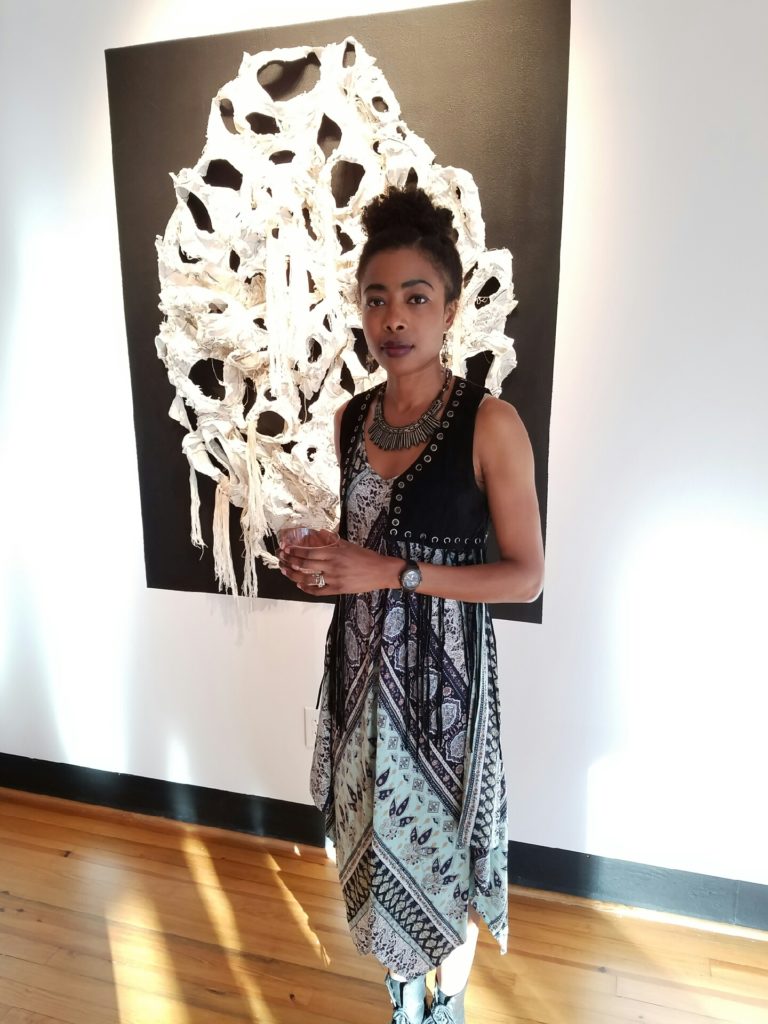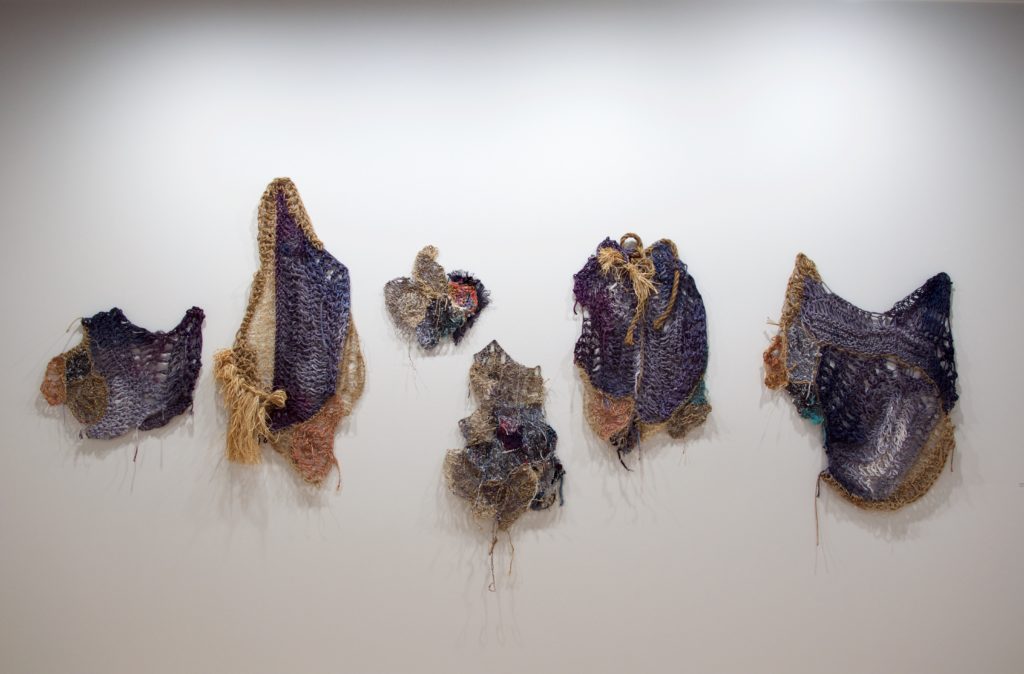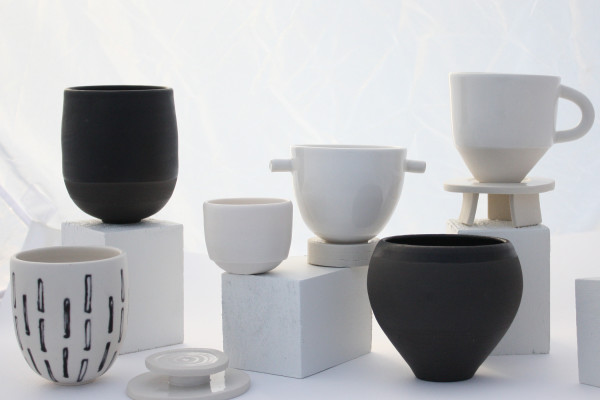Before most children knew how to write out their names, visual artist and sculptor Zipporah Camille knew she wanted to be an artist. That spark, ignited by a family of painters and poets, grew 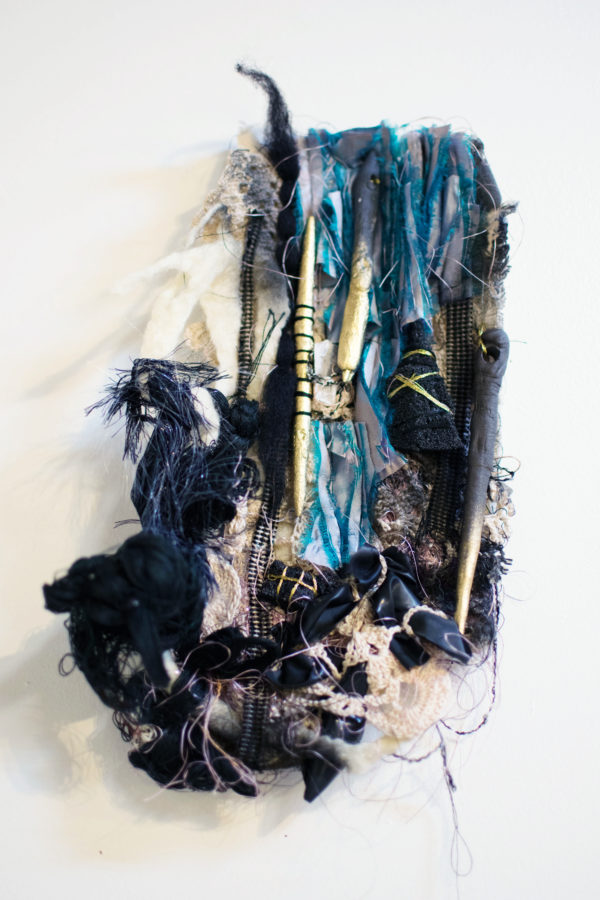 through a deep appreciation for art history combined with a commitment to self-investigation and identity.
through a deep appreciation for art history combined with a commitment to self-investigation and identity.
Her process is cyclical — the materials she keeps in her studio inspire her work, then she reacts, shaping the work to its final form. It’s a feedback loop that results in works of bright neon against neutral colors, cascading nets, overlapping threads, and geometric forms you want to reach out and touch.
Here, Camille talks with CommonCreativ about the juxtaposition of harmony and discord that plays into her creative process, wanting to be a catalyst for change, and how family history inspired her to become an artist and continues to inspire her art.
CommonCreativ: What initially sparked your interest in becoming an artist?
Zipporah Camille: Watching my dad. My dad is an artist and my very first memories of my dad are of him working on different projects around the house and working on art projects. He did a lot of watercolors and a lot of wood carving. Seeing his hands always moving from a very young age and looking up to that as a little girl, it was super inspiring, all the things he was able to do with just his hands and his imagination. Also, I should mention he is one of 11 children, I have an uncle who does oil paintings and I have aunts that write poetry.
Seeing so many family members explore, making or writing art, music, literature, or all of the above, just creating and using their talent and their skills was really exciting. I always said I wanted to be an artist when I was super tiny. And then when I was four [my dad and I] started working together, he would sit down and give me lessons. We’d draw together and we made a few artist books together. I kept evolving out of starting there and just really falling in love with art as a tiny tyke.
CC: When did you begin to develop your own personal style?
ZC: That started to happen in high school. I was in a few AP art classes and started to get exposed to a lot of different art history movements and then on throughout college. Those are such formative years. I think studying different periods and movements and artists helped shape and influence a lot of my style. I really think where I am now coming out of grad school gives you even more of a refined focus and I’m so thankful for that experience. It’s something that continuously evolves. I can’t pinpoint a particular aha moment, it just really kept kind of building on itself.
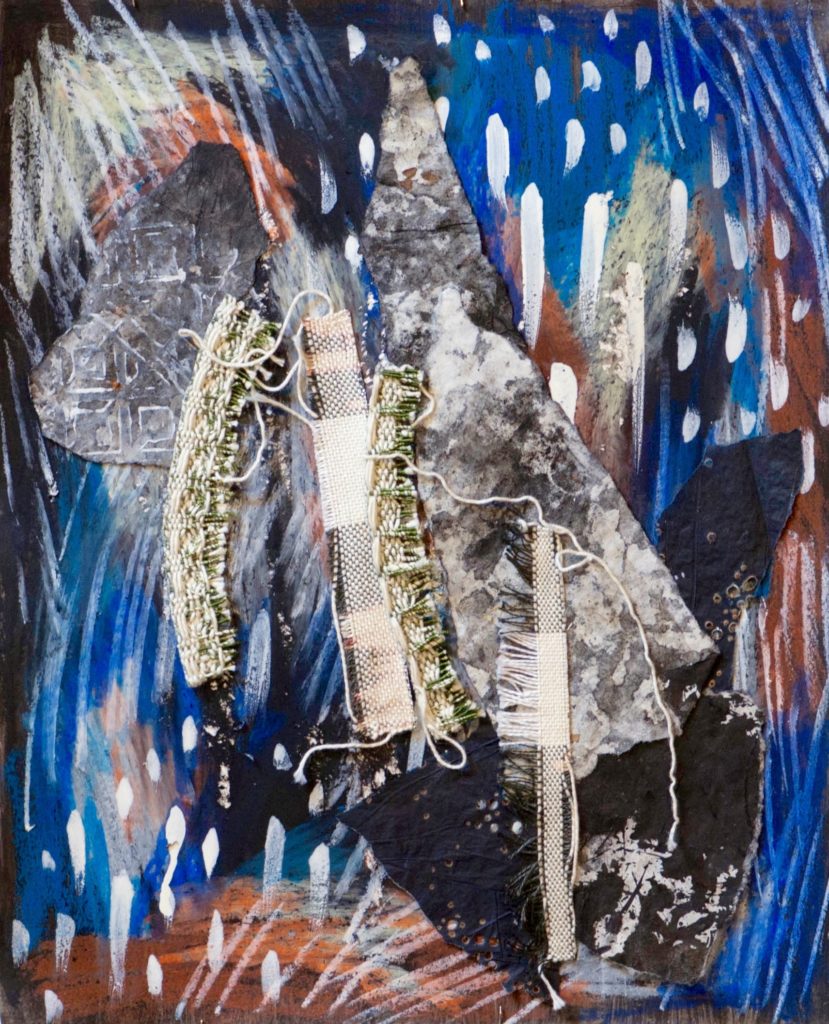 Definitely being exposed to so much that’s out there and taking history of art, people have been doing this for ages, and you can’t help being influenced by looking at everything from a Brâncuși sculpture to a Picasso painting. That can’t help but influence what you do and how you interpret the world around you.
Definitely being exposed to so much that’s out there and taking history of art, people have been doing this for ages, and you can’t help being influenced by looking at everything from a Brâncuși sculpture to a Picasso painting. That can’t help but influence what you do and how you interpret the world around you.
CC: You use a lot of different mediums — what’s your artistic process?
ZC: That process is kind of a chaotic one. I don’t know if it starts with a particular idea and then moves to the actual creating or the actual making. I want to say it kind of flips that on its head. It starts with this intuitive way of looking at one part of the studio and noticing the material and actually physically placing it with something else and seeing how my head can wrap around those two materials in conjunction. Are they creating harmony or are they creating discord? Do I like that discord do I like that harmony?
Responding in a really experimental way in the studio allows me to make unexpected decisions about different materials being placed alongside each other, and also keeps things fresh and new and fun and quirky. I really like that way of working. Usually, the ideas come to play a little bit in hindsight after these things kind of become themselves. That sounds kind of cheesy and cliche but as these things kind of take on their own lives, it’s about me responding to them. Obviously, there are these subconscious ideas there that have kind of been there all along and subconscious concepts that I continuously have on repeat. I really like for the piece to take on a whole new life or whole new meaning and then interpret what it’s trying to say, what is it connecting, what is it showing, and what is it speaking, to myself and then to potential viewers.
CC: You mentioned other artists, your family, and even getting your masters — what else inspires your art?
ZC: Definitely my surroundings, the environment — whether that’s the natural simulated environment, the physical world, the metaphysical environment around us, and also man-made environments. I can’t help but be inspired by where I’ve always naturally gone to as a child. I was always really encouraged to be outside and in the outdoors and exploring on my families land back home.
A lot of my inspiration, you might not look at everything and think, oh, there’s a mountain or there’s this particular thing that I recognize, but a lot of my sculptures and pieces are very much inspired by experiences I’ve had in different places. I always get very inspired when I’m experiencing new things, meeting new people, and traveling to different places — anything that kind of ignites that sense of adventure and exploration. Then also, those closest to me and personal history and how much family, those that are with us and those that have passed on, how all of those experiences, and all of those memories, stick with you and how that can then inform your present experience. All of that is kind of embedded in the work.
CC: If you could choose a message that your work conveys, what would it be?
ZC: I don’t think I want to choose. I think that there are obviously definite ideas that I’m thinking about that I’m hoping people will take from the work. I want to be able to communicate hope and change especially more now than ever. Trying to uplift people that might feel discouraged at the present time, people of color or immigrants, people from all different walks of life. I definitely want all people to be able to connect with the work. What it might mean to one person, it might mean something completely different to another person and what they take away can be completely different and I’m OK with that. You have to embrace that and your work has to embrace that and have some fluidity there to really reach a larger audience.
CC: Speaking of the present, what are your thoughts on art as resistance and specifically, what part do you hope your art plays in these tense, uneasy times?
ZC: I think that maybe I’m not so much approaching my art making as a form of resistance. I think it’s more about change and providing work that is more about refuge. I think it’s more of providing a catalyst for change and a way to help people to begin to heal and help people begin to break down barriers and become more mindful. I guess all of those things are forms of resistance and in that way, absolutely. I think the answer to that question is as complex as the actual solving of that problem of the stress and unease and all of this that we’re experiencing today.
CC: Of what moment or piece are you the proudest?
ZC: The work that is more about personal history but also about collective experiences I’m most connected to. I just did a project with the Hambidge Creative Hive entitled “Queen of the field.” That project had particular resonance and major significance to me because it was exploring the lives and efforts of my two grandmothers and their efforts feed their families and pass down stories through generations and really raise, watch, help and nurture all of these children through their efforts to work the land.
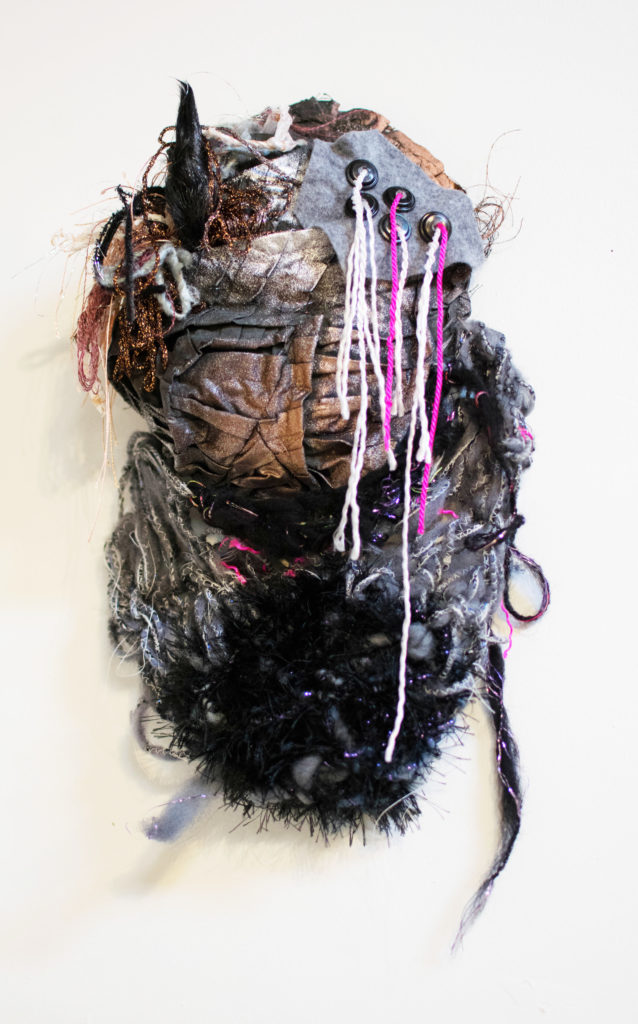 Both grandmothers in their own respective ways worked the land and were able to do all those things and provide for their families. One of my grandparents isn’t with us anymore, so just thinking about all of the stories and all of those things that come back to you when you’re delving into personal history in a project like that I definitely find major significance and connection and resonance with those works.
Both grandmothers in their own respective ways worked the land and were able to do all those things and provide for their families. One of my grandparents isn’t with us anymore, so just thinking about all of the stories and all of those things that come back to you when you’re delving into personal history in a project like that I definitely find major significance and connection and resonance with those works.
CC: What are the best aspects of being an artist in Atlanta?
ZC: I think Atlanta is a really fantastic city, I love that there is so much diversity and an eclectic vibe. I think that is really beginning to translate into the art scene. From what I’ve experienced so far I really enjoy meeting people around town and so many people are contributing to the art scene here and I think it truly is such a beautiful thing.
I’ve never experienced it on this kind of scale, an art scene that has this much of a diverse and eclectic mix. I really love Atlanta. There are so many talented artists here, designers, makers of all sorts and I think it’s a beautiful thing.
CC: What’s next for you?
ZC: I’m currently working on a solo show at Whitespace Gallery — I’m really excited about it. Things are just starting to come together conceptually and I’m really excited to see where everything continues to evolve over the next year.
See more of Zipporah’s work on her portfolio site and Instagram.

